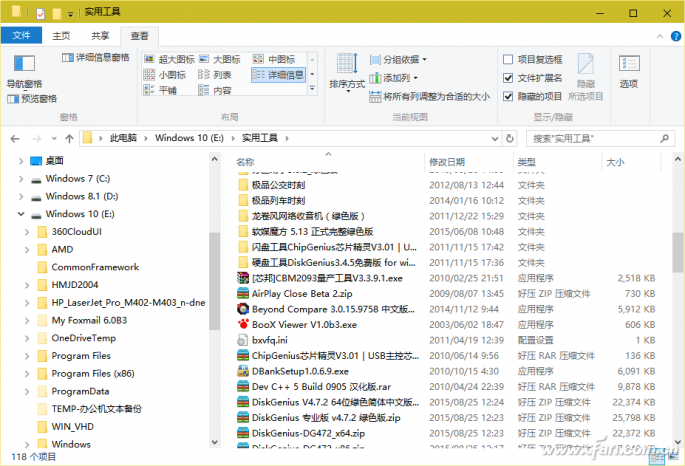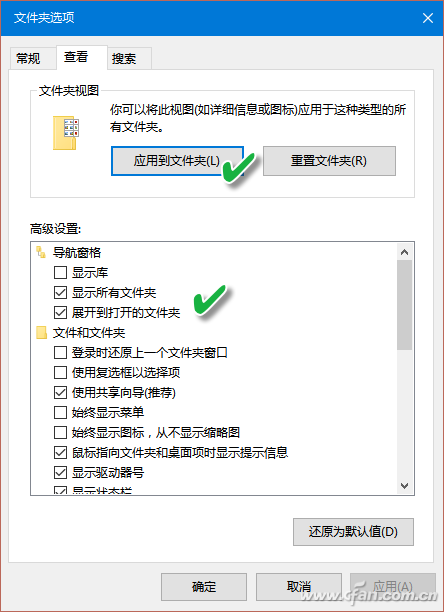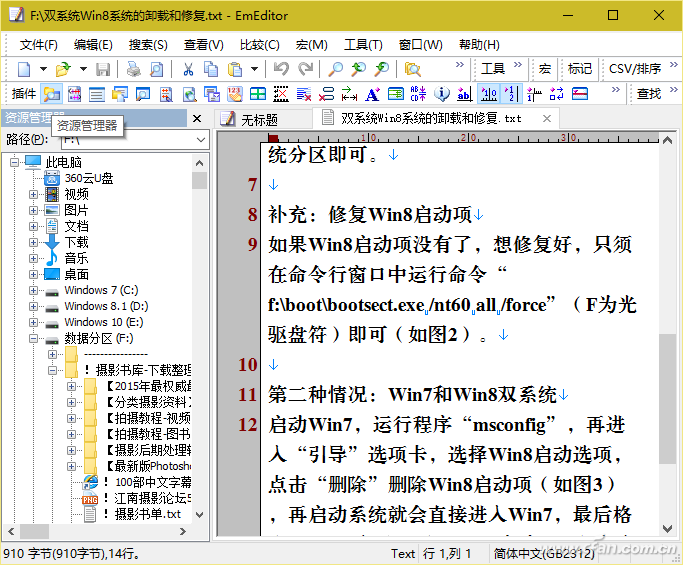After unsuccessful efforts to popularize the concept of "libraries", Windows 10 has returned to the traditional way of organizing information -- still organizing resources in the form of file lists. In a variety of file organization and presentation methods, the directory tree is the most efficient way. In the case of more folder categories and more complicated classification, using a tree structure to organize and display the file list can more vividly display the file location, name, attributes, etc., and play a very helpful role in quickly locating files. But to use the file directory tree, you need to master certain methods and techniques.
1. Two channels manually open the file directory tree
Press the key combination Win+E to open the Windows File Explorer. Switch to the "View" function tab, click "Navigation pane → navigation pane", "Layout → Details". After that, the list of folders displayed as a directory tree appears on the left side of the window. When you click on a folder, the sub-folders and the detailed list of files contained in the folder appear in the right pane (Figure 1).

The above settings only ensure that the files in the currently selected folder are displayed. If you want to apply this setting to all file list displays, you must go to the "Folder Options" window via the "Options" button of the "View" function tab, then click the "View" tab and select the "Advanced Settings" list In the "Show All Folders" and "Expand To Open Folders" check boxes, click the Apply To Folder button (Figure 2).

To expand to open folders and show all folders in the directory tree, you can also right-click in a blank space in the left pane and select execution by using the right-click menu. However, all folders that are to be applied in the way files are displayed in the list must also be validated by the "Apply to folder" in the "Folder View".
Tip: Quickly locate in the directory tree
If there are many folders in an open directory tree, you need to locate a folder quickly. You do not need to traverse this branch from top to bottom. If you directly enter the first letter (or Chinese character) of the folder, you can automatically Locate the folder that meets the criteria. Of course, you can also enter more characters, the closer you enter the full name of the folder, the more accurate the positioning. You can also use similar tricks to quickly locate files in the right window.
2. Text Edit Add File Directory Tree Window
If you can integrate a file directory tree in a text editor window, you can manage the files without having to jump out of the editor. Taking the EmEditor text editor as an example, by installing the “Explorer†plug-in, the file directory tree can be integrated into the editing window, and files can be called from within EmEditor at any time through the directory tree (Figure 3). The EmEditor "Explorer" plugin file is copied to the PlugIns subdirectory of the EmEditor installation folder, named Explorer.dll.

hint:
The 32-bit version of the EmEditor plug-in cannot be used in 64-bit EmEditor software. Currently there are relatively few EmEditor plugins for 64-bit versions, and the 32-bit version of EmEditor is recommended.
Absolute rotary Encoder measure actual position by generating unique digital codes or bits (instead of pulses) that represent the encoder`s actual position. Single turn absolute encoders output codes that are repeated every full revolution and do not output data to indicate how many revolutions have been made. Multi-turn absolute encoders output a unique code for each shaft position through every rotation, up to 4096 revolutions. Unlike incremental encoders, absolute encoders will retain correct position even if power fails without homing at startup.
Absolute Encoder,Through Hollow Encoder,Absolute Encoder 13 Bit,14 Bit Optical Rotary Encoder
Jilin Lander Intelligent Technology Co., Ltd , https://www.landermotor.com